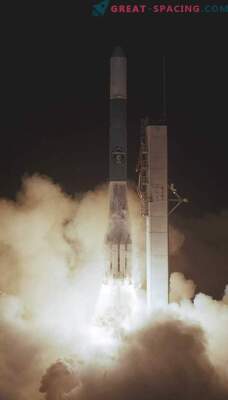
Eight NASA's CYGNSS satellites are in orbit and are ready to predict the strongest storms that can cover our planet.
NASA has just launched a group of small satellites whose purpose is to track earthly extreme weather events. But this is no ordinary launch. Eight vehicles from the Cyclone Global Satellite Navigation System were sent by rocket into the stratosphere.
The delivery was made by an Orbital ATK Stargazer aircraft (a converted Lockheed L-1011 TriStar airliner built in 1974) using a Pegasus XL rocket (in the photo). Released at an altitude of about 40,000 feet the rocket, resembling a winged one, was stabilized with the help of fins and tail. When its engine lights up, the rocket slides in front of the aircraft, and then gradually rises and quickly gains altitude. This type of launch allows NASA and other agencies to launch launches without the need for expensive missiles launched from the surface. The two previous starts (on Monday and Wednesday) had small problems, but this one went off without a hitch. According to NASA, all the satellites were in orbit and, at the time of writing, 5 of them have already transmitted information to the control point.
By communicating via GPS, CYGNSS will magnify the image of tropical regions to measure wind speed over the oceans. Information is used to more accurately predict the formation of hurricanes and calculate their consequences. In the final orbit, the satellites will be positioned to shoot the Earth at points every 12 minutes. This large-scale view will help scientists track the most powerful storms.











































